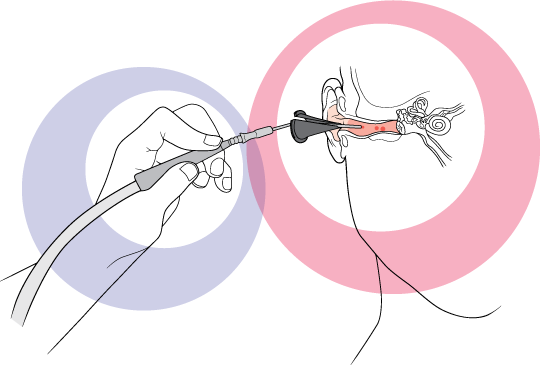How does Microsuction work?
It is a gentle vacuum procedure, leaving the ear dry and is regarded as the healthiest option. The procedure is performed using microscopes, which in our opinion, is a must to view the ear canal clearly to ensure safe removal of wax.

How long does it take?
The length of your treatment will depend on the degree of blockage and whether one or both ears need to be treated, so please allow for up to 45 minutes in your schedule.
Does it hurt?
Microsuction should not cause any pain or discomfort. However, due to the sensitive nature of the ear canal, extra care is taken to avoid touching the surface in order to prevent discomfort. The suction can sound relatively noisy. If you have an ear infection or inflammation in the ear canal, the procedure may be slightly uncomfortable. But, most people report no discomfort during the procedure.
How often can I have my ears Microsuctioned?
The treatment can be administered as required. Some clients have the treatment a couple of times a year, others less frequently. As the Microsuction removal treatment is a far gentler procedure than other types of ear wax removal, you can come back far more regularly for treatment.

I have otitis externa (inflammation/ infection of the ear canal) in both ears, can you help?
Yes. You may have been informed by your GP that you have otitis externa and likely been prescribed eardrops. Microsuction will remove infective debris enabling the treatment to successfully reach the canal lining enabling more effective recovery
This will also usually improve your hearing immediately.
What are the possible side effects of Microsuction?
The clinical practitioner will discuss the possible side effects and risks prior to treatment.
As with any procedure, Microsuction carries a small amount of risk and potential side effects, most of which are very rare. The most common side effect is some dizziness, faintness or vertigo during or shortly after the procedure. This is temporary and is because Microsuction ‘cools’ the temperature of the ear canal.
There is a small risk of infection.
As a tube is being entered into the ear canal, there is a small risk of damage or trauma occurring to the canal and eardrum. In very serious cases, this can include perforation of the eardrum, but this is rare.
During Microsuction, there is some noise generated by the equipment. Some people find this noise to be very loud. In some cases, this can lead to hearing loss, which may be temporary or permanent. It may also cause tinnitus or worsen existing tinnitus. It is worth noting that this is also a rare occurrence.
